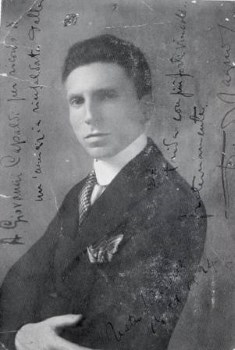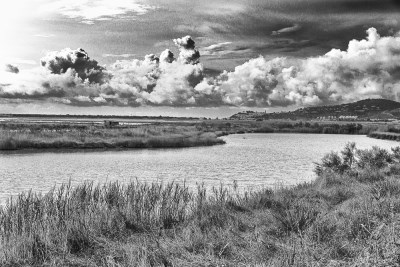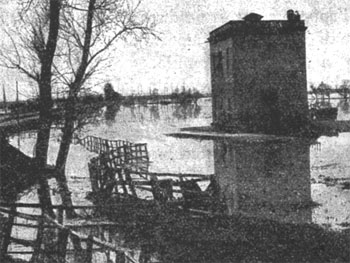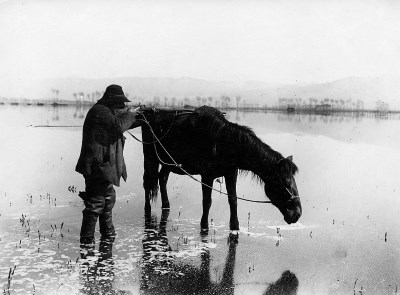FORGOTTEN ARTISTS - An occasional series by Christopher Howell
15. Pasquale Di Cagno (1888-1965)
Forgotten Artists index page
 So far, my “Forgotten Artists” have all been performing artists. In truth, the present article is an offshoot of my listening for an article on the conductor Pietro Argento. That article will appear in due course. Meanwhile, since nothing in English seems to exist on Di Cagno, I thought it might be of interest to post this as a separate article. I have had to base myself on listening to just one work but, as readers will realize, the likelihood of hearing another one is practically zero.
So far, my “Forgotten Artists” have all been performing artists. In truth, the present article is an offshoot of my listening for an article on the conductor Pietro Argento. That article will appear in due course. Meanwhile, since nothing in English seems to exist on Di Cagno, I thought it might be of interest to post this as a separate article. I have had to base myself on listening to just one work but, as readers will realize, the likelihood of hearing another one is practically zero.
Di Cagno’s “etching in one act”, “Maremma”, is about as far off the beaten track as you could get without actually exhuming an opera that has never been performed at all. Pasquale Di Cagno was born in Bari on January 27, 1888. A child prodigy, he was playing the guitar at the age of four – wonderfully, one of my sources says – and the piano at the age of six. He had some compositions published in 1909 and in 1911 won a competition for a song with orchestral accompaniment. He moved to Milan in 1912 and by now was attracting the attention of such luminaries as Mascagni and Puccini. His first opera, “Frida”, was well received in Bari in 1924 and at the San Carlo Theatre of Naples in 1932. He also attracted attention as a conductor, after standing in for an indisposed Toscanini at La Scala. Toscanini intended to produce “Frida” at La Scala, but the Fascist regime was increasing its grip and Toscanini was forced out of the country.
The two sources on which I am relying are a 1968 essay by Alfredo Giovine and the entry by Salvatore De Salvo (1991) in the Treccani Dizionario Biografico degli Italiani. Both are worth seeking on internet if you can read Italian. Unfortunately, both are short on dates for the next part of the story. Probably dates are not easy to establish.
“Frida” was followed by the one-act “Passiflora” and the three-act “Ondina”, which Di Cagno apparently considered his masterpiece. His work was not exclusively operatic. There was an orchestral Suite in five movements, while a “Chanson-Dance” for voice and piano was broadcast by Radio Bari in 1933. De Salvo dates the first draft of “Maremma” to this period. Another passing reference on internet dates it to 1929. Both Giovine and De Salvo relate that Di Cagno entered “Maremma” for a competition held by La Scala, using the pseudonym Costante Costanti. Neither gives the date of this competition. According to Giovine, the pseudonym was adopted because there were prejudices held against him. “Since he rebelled against acceptance of the usual compromises that degraded the principles of his art, he was boycotted so strenuously that no remedy was possible”. It would be nice to know what actually happened. Giovine also tells us that Di Cagno was outspoken against “the iconoclastic fury of dodecaphony that began to undermine our glorious melodrama”. But dodecaphony found no favours with the Fascist regime either and I wonder if this episode belongs to the post-war years. Whatever, the true identity of “Costante Costanti” got about and the opera was rejected.
Di Cagno faded from view, both as composer and conductor. The archives of the publisher Sonzogno, including manuscript materials of Di Cagno and the plates they had been preparing for an edition of “Ondina”, were destroyed during the war. Neither Giovine nor De Salvo attempts a catalogue of what survives in performable state and what is known to have been written but has disappeared. Maybe nobody knows. Probably nobody would perform the music anyway, but it would be nice to have a list. A “Chromatic Improvisation on a Waltz Theme” and a “Gavotte and Scherzo” are mentioned by De Salvo, without any indication of their instrumentation.
So utterly had Di Cagno disappeared from the scene that Giovine felt the need to correct an evidently prevalent perception that he had moved to the United States. It seems he never left Milan. His son Walter, on the other hand, emigrated to America and attempted to make his father’s music known. As a result, several of Di Cagno’s works were performed in the Carnegie Hall in 1961 during a concert entitled “Half a Century of Italian Music”. Ripples of this reflected back to Italy and, in August 1965, the RAI put on a programme of Di Cagno’s music. The composer just lived to hear this – he died on October 27, 1965. He never heard, therefore, the first performance of “Maremma”, which RAI gave on November 28, 1966. The first staged performance was given at the Teatro Petruzzelli of Bari on January 27, 1968. Have there been other productions?
The RAI performance has had some sort of unofficial dissemination and can be heard on YouTube in what appears to be passable off-the-air sound. There was a typical “RAI cast” for those years of Angela Vercelli (Mara), Luigi Infantino (GiosŤ), Giuseppe Zecchillo (Turi) and Ennio Buoso (Il pastore). Pietro Argento conducted the Orchestra Sinfonica e Coro di Roma della RAI. The applause preserved at the end sounds more like respectful appreciation than a standing ovation.

The Maremma
before draining
Without a score, libretto or even a synopsis, I can record only generalized impressions. The Maremma is a large and once rather wild region of Italy covering parts of Tuscany and Lazio. At the time to which the opera refers, it was a zone of unhealthy swamplands – drained during the Fascist regime – populated by horse-riding cattle breeders called “Butteri”. A sort of Italian “Carmargue”, perhaps. The opera is clearly “verista” in style, with a pastel-pastoral orchestral backdrop and a chorus of, presumably, local villagers. Much of the first part is taken up with a love duet between Mara and GiosŤ. “Love duet” here means, as often in “verista” pieces, sections sung in alternation, the singers coming together just for the climax. The match is apparently not approved by Mara’s family, since Turi can be heard demanding his daughter back – Zecchillo is clearer with his words than the others. The result is a confrontation between GiosŤ and Turi, concluding in the former’s death and Mara’s distraught final solo. As I say, I hope I’ve got all this right with only the singer’s words to base myself on.
It’s a simple, conventional story, but it’s also straightforward in its construction and there’s no reason why it shouldn’t work on stage if the music makes it worthwhile. The general timbre is close to Mascagni in pastoral vein – a through-composed score with a well-wrought, colourful, orchestral basis. It tends to be leisurely in its unfolding, and is inclined to be less individual when the tempo increases – the chorus work towards the end, for example. As with so much “verista” opera, the vocal writing is unfailingly melodic, without ever branching into actual melody. Here one must be careful, though. For one thing, vocal writing that is melodic without actually branching into melody tends to be considered an excellent thing when Richard Strauss writes it, but proof of “I would but I can’t” when the composer is Italian. For another, these melodic phrases that don’t quite seem to be melodies can often prove to be real melodies when one hears them for the fourth or fifth time – and I haven’t done that yet. So let me just say for now that my attention was always held.

The Maremma before draining
Another feature that Di Cagno has in common with other “verista” composers is a tendency to use the voices in their upper registers and to keep them there. The result is that, whenever an opera of this kind is revived today, it all too often emerges as one long scream, and the buffs tell us that, of course, in the days when they were written, there were singers who could really manage them. 1966 is a fair compromise between our own day and the days when singers “could really manage them”. Both Vercelli and Infantino have attractive voices – in the case of Vercelli there are times when I’d change that word to “beautiful”. The other two singers have less to do but are also effective. For entire stretches, Vercelli and Infantino negotiate their soaring lines in a manner that suggest they must be very grateful to sing, if you can. Then Di Cagno pushes them up one step further and there are signs of strain.
A modern conductor might have done them no favours by insisting on a metronomic beat, or dragging the tempi. Argento went back far enough to have learnt his art from the flexible conductors of the past. He gives the singers the space they need. His conducting is loving but not indulgent – he keeps it all moving. The orchestra play well if without any special virtues of nuance, the choir is a bit rough and ready.
What is the future for this opera? I don’t see why it shouldn’t be effective on stage, given the right singers. The rustic setting might make it a good companion for “Cavalleria Rusticana” as a change from “Pagliacci”. It lasts 42:32 in this performance. On the other hand, the right singers are not so easily found They might be better employed in one of the many “other” operas by Mascagni, Leoncavallo, Giordano or Cilea that are hardly better known and possibly deserving of precedence. Given that the RAI performance would probably not be bettered by a modern one, Di Cagno’s cause would be reasonably served by a wider dissemination of this recording. It would make a short CD, so I wonder if anything remains of the 1965 broadcast concert.

A Buttero in the Maremma, 1920s
Christopher Howell 2016
